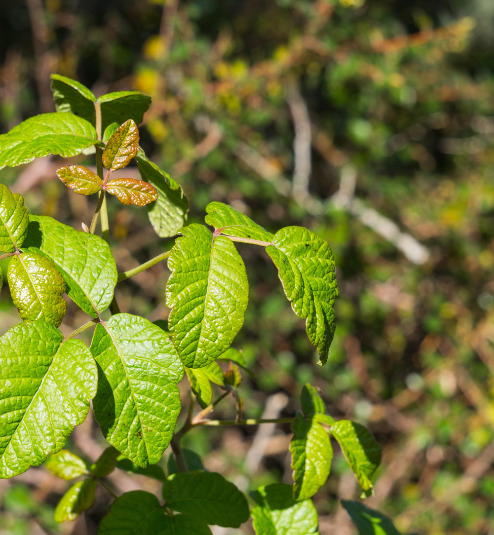Poison Ivy, Oak, and Sumac
A substance known as urushiol (yur-oo-shee-aal) can be found in poison ivy, oak, and sumac. You may develop a rash if you are allergic to this oil. Almost everyone who comes into contact with this oil develops a rash due to the fact that the majority of people are allergic to it.
Your allergic reaction is likely to be more severe the more exposure you have to these plants.
Who might get a poison ivy rash?
Everybody who comes in contact with urushiol develops a poison ivy rash. If you’re a camper or hiker, a farmer or gardener, a groundskeeper or landscaper, a forestry worker, a forest firefighter, a home painter, or a roofer, you’re more likely to come into touch with this poisonous plant.
What are the symptoms of a poison ivy rash?
Poison ivy signs almost usually include:
- An itchy skin rash.
- Redness and swelling.
- Blisters.
Depending on how sensitive your skin is, a rash could appear hours or days after first coming into touch with urushiol oil. The degree of itching can vary, and some individuals may only get a few little rashes while others experience widespread rashes all over their bodies.
Poison ivy rash stages
No matter how long it takes for a rash to appear, it typically develops gradually and peaks within one to 14 days after exposure. For persons who have never been exposed to urushiol oil, symptoms may not appear for up to 21 days following the first exposure.
For most people, the stages of poison ivy rash include:
- Itching. The skin will begin itching extremely where the rash will eventually appear.
- Rash. After the skin starts to itch, rashes will be visible. Mostly, it’s an intense, blistering rash.
- Fluid-filled blisters. If blisters have developed, they’ll break open and leak fluid.
- Crusting and itching. The blisters will crust over but will still be itchy.
Is poison ivy contagious?
You can’t have a poison ivy rash by just touching another person’s rash. However, you could get a rash if you touch the oil on another person’s body or clothes. Touching the fur of your pet or a contaminated object, such as a gardening tool or piece of camping equipment, might also expose you to the oil. The fluid from blisters doesn’t contain urushiol oil and hence isn’t contagious.
Are you suffering from this condition? At The Chelsea Clinic, we can help. One of our podiatrist can assist and then recommend what treatments are best to get you back on track.  Podiatrist South Kensington
Podiatrist South Kensington
Schedule an appointment here or you may call us at +44 (0) 207 101 4000. 
We hope you have a feetastic day! 

-The Chelsea Clinic and Team


 Podiatrist South Kensington
Podiatrist South Kensington




